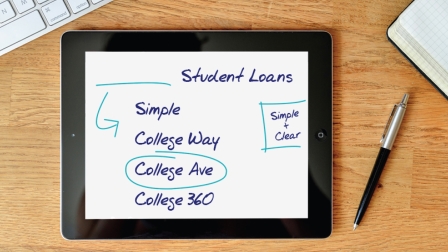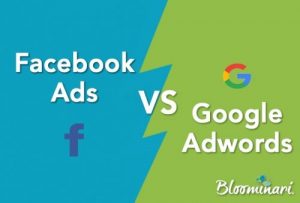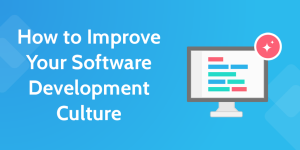CMO Jennifer Astle is leveraging her retail marketing background to bring a more personalized customer experience to the banking industry.

As College Ave’s CMO, Jennifer Astle says the student loan company has built its entire brand — and team — around three core pillars: personalization, transparency and simplification.
“We took people with banking experience, and also deep customer retail experience, to bring those two worlds together.”
Astle has managed College Ave’s marketing efforts since its start two years ago. She says she saw the role as an opportunity to take her learnings in creating a seamless customer experience within the retail world and applying them to the banking industry.
“Banks have a ton of data on the customers. They really know who their customers are,” says Astle. But the CMO says because banks provide a need-based product, they are very rarely focused on the customer experience.
“We’re dealing with students who were demanding that kind of white-glove treatment of you need to know me and give me what I need,” says Astle.
Today, Astle shares how her brand leverages personalization within its marketing efforts and what she has learned when it comes to anticipating her customers’ needs.

Jennifer Astle
CMO @ College Ave
Takeaways:
1. Only personalize where you can deliver.
2. Let the customer drive.
3. Keep it simple.
Amy Gesenhues: To start, can you tell me more about College Ave and how you came to be the brand’s CMO?
Jennifer Astle: We started College Ave Student Loans about two years ago. Joe DePaulo, one of the co-founders, had approached me when it was just an idea for him. I was actually at eBay when he called me up and said he wanted to start this new company that really did something different than banks have.
He saw a real opportunity in the student loan space — especially since the education space itself has been evolving over the past couple of years, and the student loan market as result — to do something different.
It was really right to come in and be impactful, and do something good for students who are the customers.
AG: As one of your core pillars, what role does personalization have in your overall marketing efforts?
JA: We have the benefit of doing everything from the start. We really leveraged personalization in every facet, all the way from how we develop and build the products, to how we bring those products to market through the actual origination process, to how we service the customer.
Again, that’s a little easier for us, building everything from scratch. We took the product and pieced it apart to ask what are the actual customer needs that we’re meeting? Who is the student? What type of school are they going to? How are they managing their finances? What is the total amount of debt that they’re willing to take on versus their monthly cash flow?
For example, if you go to our website, you’ll see the number one statement there is to let us help you configure your loan. We take you through the process: “Who am I? What do I actually need? How do I manage my financial life?”
Then, at the end of that process, you have two paths to go down. You can take an example, based on other people that we know similar to you, or you can actually use our pre-qualification tool information, and get your personalized loan.
AG: Where do you see College Ave’s personalization efforts having the biggest impact?
JA: I will say we see it in three places — We see it mostly in brand awareness, customer quality, and then finally, engagement.
I would say certainly the brand awareness part was the biggest surprise to us. In particular, against the biggest competitors in the space, Discover, Wells Fargo and Sallie Mae. These are big guys that have been out there for 40-plus years. To try to break through that and say, “Hey, we’re new, you should take us seriously,” we just weren’t sure if we were going to be able to accomplish that.
In year one, we were able to see almost 30 percent of our traffic go directly to our website, which means people knew our brand, and they knew us through social interaction, not through a big TV campaign or radio campaign of our own.
It was really word of mouth that was starting to evolve in this space, and people saying, “This is something different. It was a lot easier for me to interact with the brand.”
AG: Can you point to a specific campaign where personalization helped drive quantitative results?
JA: We have a brands campaign that we deliver through social and banner ads, etc. Basically, the tagline of the campaign is, “Find Your Perfect Fit. You’re unique. Your family is unique. Your education should be.”
The campaign leverages a pre-qualification tool for potential customers to see if they qualify for a loan by entering just a few pieces of information, a loan calculator to showcase the total cost of the loans, and how to save based on different repayment options, and free credit education sessions to help prep their credit ahead of fall tuition bills.
Take a selfie and show us why your school is the perfect fit for you! Enter for a chance to win: https://t.co/sSeVBMqxIa #myperfectfit
— College Ave Loans (@CollegeAveLoans) May 11, 2016
The campaign has been tremendously successful. For the same media spend, we are realizing a 140-percent lift in site visits, a decrease of eight percent in our bounce rate and a 100-percent lift in our application complete rate.
AG: What types of marketing technology have you found to be most effective when it comes to personalization? Do you guys build most of your tools in-house, or are there any solution providers you can name?
JA: It’s a combination. Unfortunately, since this is fairly unique for the banking space, a lot of it we did have to build custom. Anything that was around product building, or unique to how somebody would apply and sign up for the product, that was custom.
For actual marketing, as far as getting that message out, for instance, in the campaign that I talked to you about, we used good old-fashioned Google Analytics and performance-based media to programmatic media.
AG: I imagine there is a fine line between a savvy personalization experience and one that could potentially overstep a consumer’s comfort level when it comes to online loan products. Is this a challenge for your brand?
JA: I actually saw more sensitivity to personalization in retail than I do in banking.
For instance, when we dealt with shoe companies or high-end companies, and you said, “I noticed you liked these pink wedges — You’ll also love these yellow ones,” sometimes people didn’t really like mining their personal history.
What I see in banking is people really appreciate you taking them through a process because they don’t understand everything, or they’re intimidated by it. They’re much more willing to give their personal information if they think what they get back is a deeper knowledge to make the right decision.
AG: Are there any examples you can share where personalization didn’t pay off?
JA: I worked on a rewards program where, during the signup process, we had it very sophisticated and very personalized. Then, that personalization stopped at the end of the signup process.
We actually saw a high amount of attrition. We were trying to predict everything that they would want to be interested in and didn’t show them anything they wouldn’t be. You’re not always completely accurate on that. We actually saw engagement rates go down because we couldn’t always be accurate in giving the person the right next product.
I think some people appreciate the exact personalization, and some people actually want to make their own choices and don’t want you to make that choice for them.
AG: What has been your biggest challenge around personalization within College Ave’s marketing efforts?
JA: I would say, on our end in particular, we have a diverse audience range, from a high school senior who has no experience with financial products, to their parents, who may have significant or limited [experience], to a very savvy graduate student. Layering on top of that, we don’t really understand their depth of financial knowledge.
It is challenging figuring out not just who your customer is, but actually, what they need to know to make the right decision. In the financial services world, you could give them reams of information, and you actually overcomplicate their decision — or you give them just a little bit, and then they don’t have enough.
It’s really finding that sweet spot between knowledge and your audience — to make that ultimate experience for them.
AG: How do you find that sweet spot?
JA: We leverage some tools to actually ask them those questions. If you go through our website, you’ll notice it’s really flat-footed. It really does help us understand where you are on that spectrum. Without that interaction, it would be very difficult for us to identify that.
For instance, if they came and said, “I am more concerned about my monthly budget versus the total debt I’m taking on,” we would customize that personalization further. If they just didn’t know, we would actually give them the right information to understand differences between fixed and variable pricing.
AG: As a CMO who is highly invested in personalization, how do you see it evolving in the coming years?
JA: I’ve really seen personalization evolve, even over the past five years. I would say two years ago, it was the thing that everybody was aspiring toward. It was, everybody needs personalization — this is what millennials want — this is what millennials need.
I think it has evolved now to be a more realistic personalization. Understanding that personalization is not a one-size-fits-all. Not meaning it has to be a custom communication to that very person based on reams of data — it can actually be personalization based on how they’re interacting with you.
It’s interesting. It’s viewing personalization as a customer’s openness to interact with your brand versus us just pushing content out to a customer based on what we think they want. I think that’s an important evolution.
I think the evolution of the analytics around understanding — not mining customer processes to understand what they want, but actually viewing it from how is the customer actually interacting with your brand — is far more meaningful than tons of data and modeling. I will tell you, I’ve seen both, and I am a big believer in seeing what they’re actually doing versus what the preference data may tell you.
If you look at a lot of current websites, I actually have seen websites trending toward that, where it’s one question at a time. Before, you might have gotten a big litany of information that was customized toward you. Now, it’s more reactive. It’s saying, “What do you want? I’ll give you the next thing.”
To me, that’s probably the utopia of personalization, putting the customer in the driver’s seat rather than us.
Marketing Land – Internet Marketing News, Strategies & Tips
(87)




